
The Japan Times is Japan's largest and oldest English-language daily newspaper. It is published by The Japan Times, Ltd., a subsidiary of News2u Holdings, Inc. It is headquartered in the Kioicho Building in Kioicho, Chiyoda, Tokyo.

The Dong-A Ilbo is a daily Korean-language newspaper published in South Korea. It is considered a newspaper of record in the country, and was founded in 1920. The paper has been a significant presence in Korean society and history, especially during the 1910–1945 Japanese colonial period, when it was seen as a forerunner in the Korean independence movement.

The Gyeongnam Ilbo (Korean: 경남일보) is a daily Korean-language regional newspaper published in Sangpyeong-dong, Jinju, South Korea.

Shin Chae-ho, or Sin Chaeho, was a Korean independence activist, historian, anarchist, nationalist, and a founder of Korean nationalist historiography. He is held in high esteem in both North and South Korea.

Russia–South Korea relations or Russian–South Korean relations are the bilateral foreign relations between Russia and South Korea. Modern relations between the two countries began on September 30, 1990. Due to the 2022 Russian invasion of Ukraine, relations became very tense after South Korea imposed sanctions against Russia. Russia placed South Korea on a list of "unfriendly countries", along with Taiwan, Japan, Singapore, the United States, European Union members, NATO members, Australia, New Zealand, Switzerland, Micronesia and Ukraine.
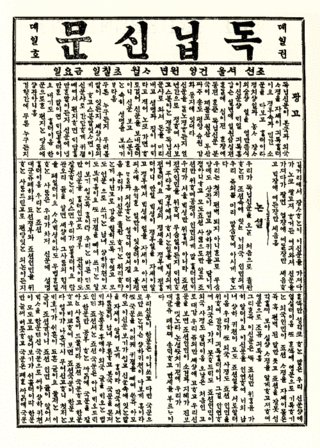
Tongnip sinmun, also known by its translated title The Independent, was a historic newspaper printed in Korean and English and published between 1896 and 1899. It was the first privately managed daily newspaper in Korea and the first to print editions written exclusively in Hangul.

The Hwangsŏng Sinmun, also known as Capital Gazette or Imperial Capital Gazette, was a Korean-language daily newspaper published in the Korean Empire between 1898 and 1910. For two weeks before it closed, the newspaper went by the name Hansŏng Sinmun.
Modern newspapers have been published in Korea since 1881, with the first native Korean newspaper being published in 1883.
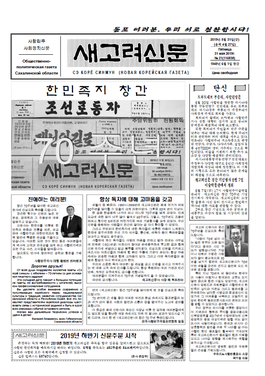
The Se Korea Sinmun is a weekly Korean- and Russian-language newspaper published for Sakhalin Koreans from Yuzhno-Sakhalinsk, Sakhalin Oblast, Russia. It was first published on June 1, 1949 as the Korean Worker (『조선로동자』), and later as On the Path of Lenin. It received its current name in 1991.

The Maeil Sinbo was a Korean-language newspaper that was published from 1910 to 1945 from Keijō (Seoul), Korea, Empire of Japan. The newspaper was the successor to The Korea Daily News, which was first published in 1904. It continued publication, largely as an organ of the Japanese colonial government, until the liberation of Korea in 1945. Afterwards, it was taken over by the United States Army Military Government in Korea and reorganized into the Seoul Shinmun by November 23, 1945.
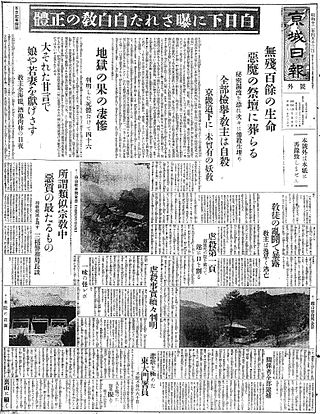
Keijō nippō was a Japanese-language newspaper published in Korea from 1906 to 1945. It is primarily associated with the Japanese colonial period in Korea, and is considered to have functionally been an official newspaper of the Japanese Governor-General of Chōsen.

The Seoul Press was an English-language newspaper published in the Korean Empire and Korea under Japanese rule from 1905 to 1937. It is considered to have been the de facto official English-language publication of the Japanese colonial government in Korea, and was the sole daily English-language paper published in Korea during that time. It was subordinated to the Japanese-language newspaper in Korea Keijō Nippō in 1930, and closed under a colonial government order in 1937.
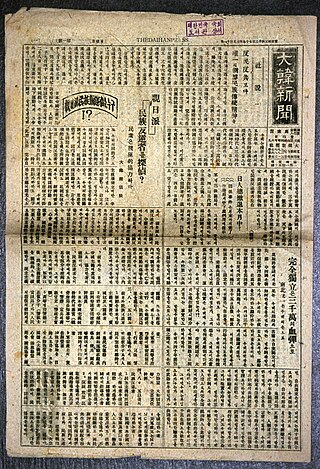
Taehan Sinmun, or The Daihan Press, was a Korean-language newspaper published in the Korean Empire from 1907 to 1910.
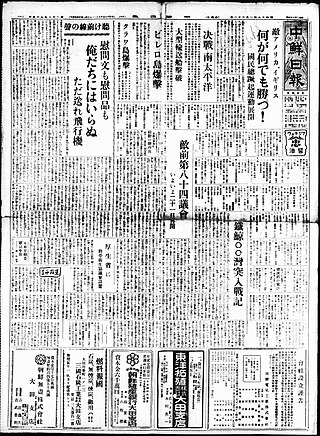
Chūsen Nippō was a Japanese-language newspaper published in Daejeon, Korea, Empire of Japan from 1909 to 1945.

Taedong Kongbo was a Korean-language newspaper published in Vladivostok, Russian Empire from 1908 to 1910. It briefly changed its name to Taedong Sinbo before its closure.
Taeyangbo was a Korean-language newspaper published in Shinhanchon, Vladivostok, Russian Empire in 1911. It was written entirely in the native Korean script Hangul.
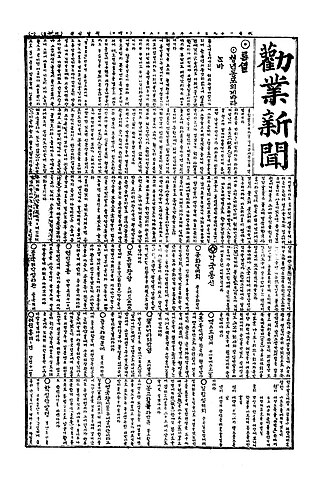
Kwŏnŏp Sinmun was a weekly Korean-language newspaper published in Shinhanchon, Vladivostok, Russian Empire from 1912 to 1914. It was written in the native Korean script Hangul, and was named for and was the official publication of the Korean organization Gwoneophoe.
Gwoneophoe, name sometimes translated as Work Promotion Association or Association for the Encouragement of Industry, was a Korean diaspora organization in Primorskaya Oblast, Russian Empire from 1911 to 1914.

Sinhanch'on was an enclave of Koreans in Vladivostok that existed between 1911 and 1937, during which time the city was controlled for periods by the Russian Empire, Far Eastern Republic and finally the Soviet Union.
















